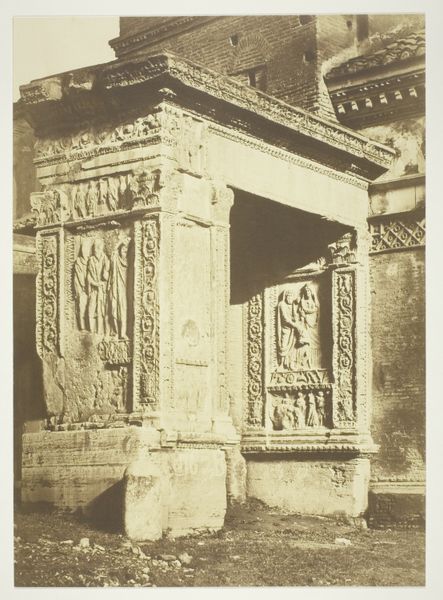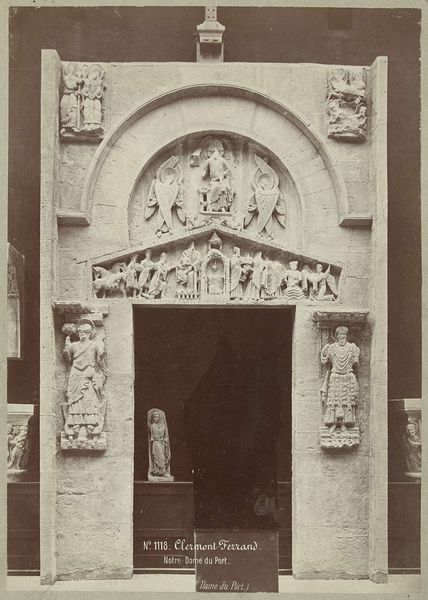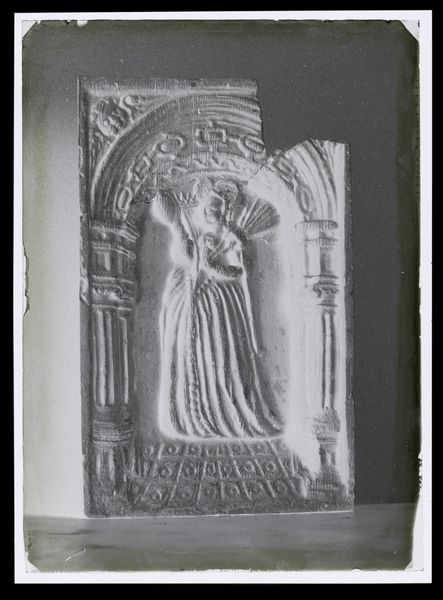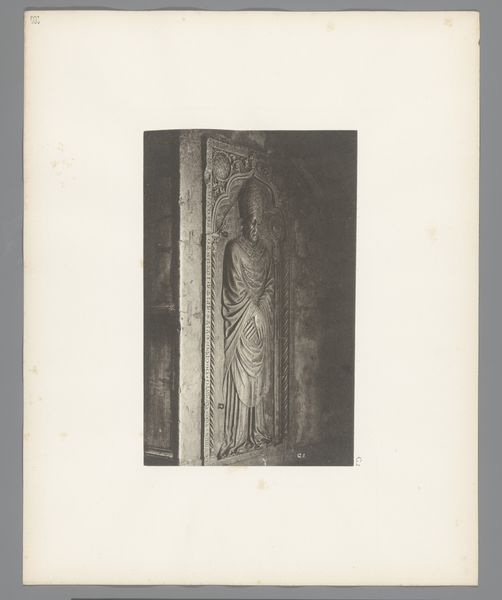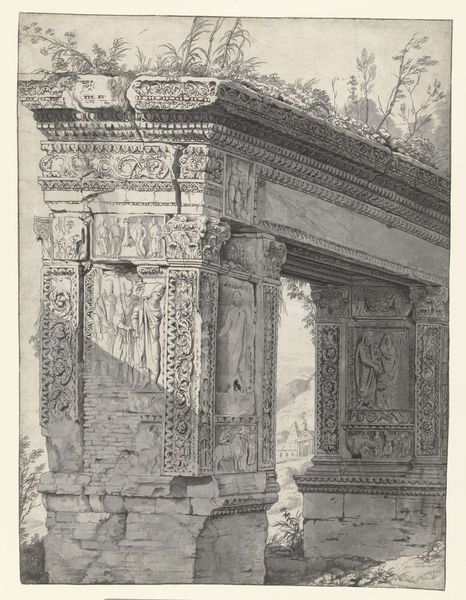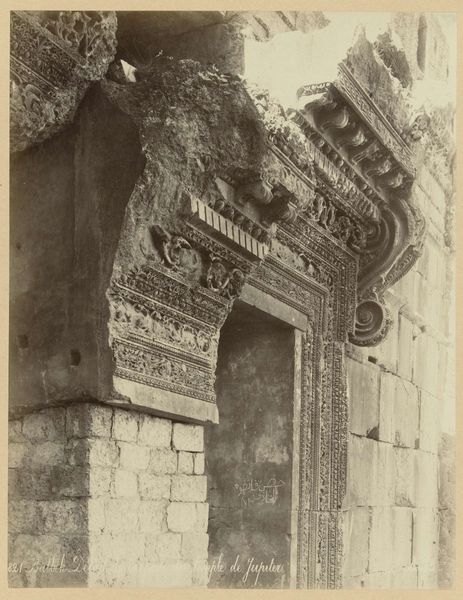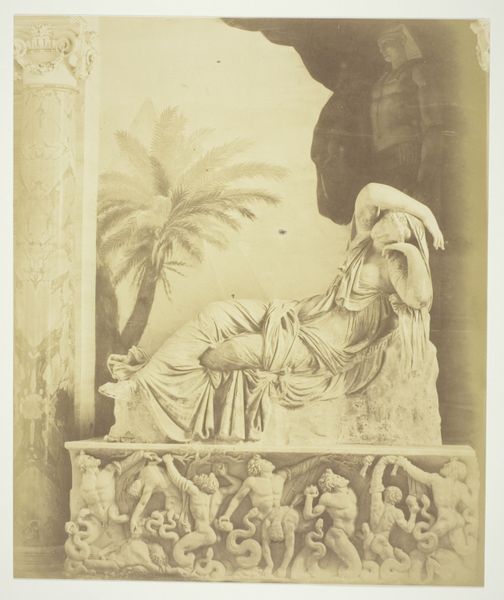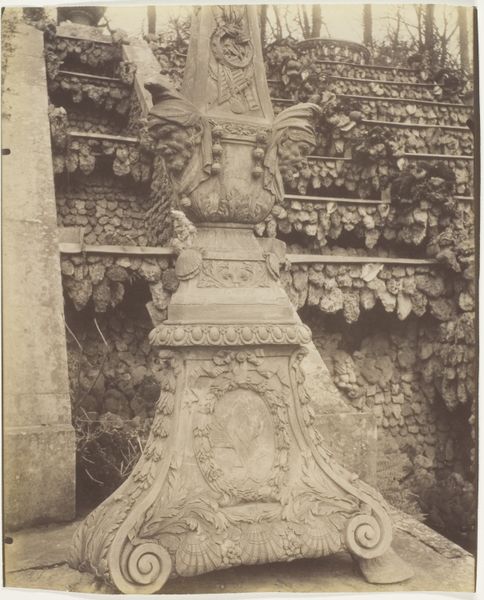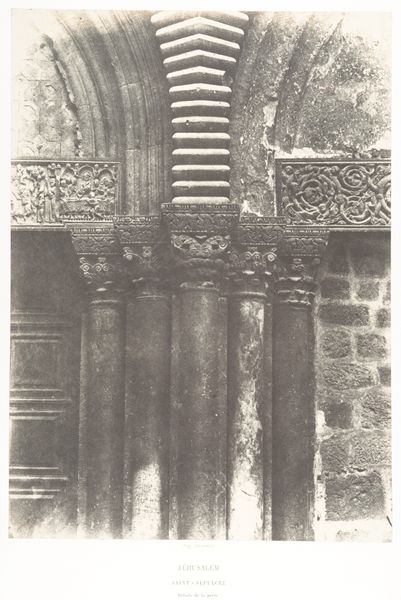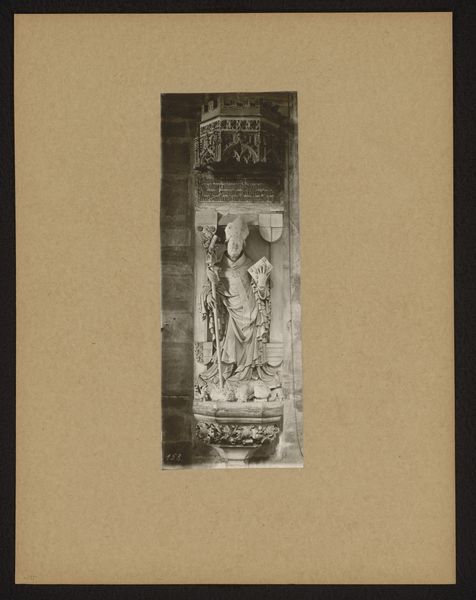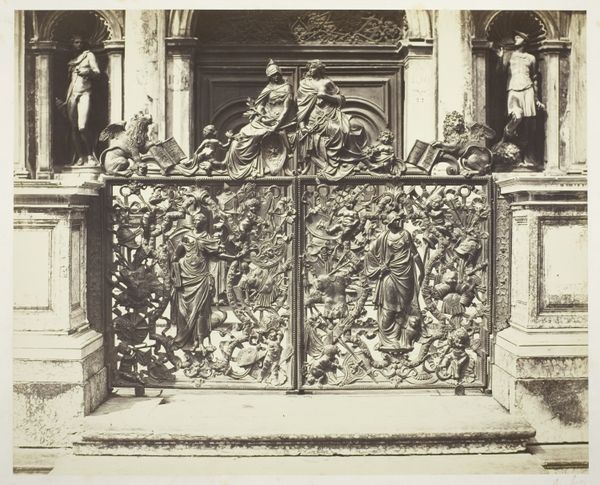
mixed-media, print, intaglio, relief, photography, sculpture, architecture
#
mixed-media
# print
#
intaglio
#
asian-art
#
relief
#
landscape
#
photography
#
sculpture
#
arch
#
19th century
#
architecture
#
realism
Dimensions: 16.4 x 11.2 cm (6 7/16 x 4 7/16 in.)
Copyright: Public Domain
Curator: This stunning photograph by Emile Gsell, taken in 1866, is titled "Détail Décoratif de la Grande Pagode" – Decorative Detail of the Great Pagoda. It resides here at the Metropolitan Museum of Art. Editor: What strikes me immediately is the sheer texture of the stone. It feels so immediate, as though I could run my fingers over the relief carving myself. The level of detail is remarkable, especially for a photographic print from this period. Curator: Absolutely. Consider that this image not only captures a specific decorative element of the Angkor complex, but it also functions as a document of the colonial gaze. Gsell was operating within a system of French Indochina, and his photographs, while artistic, served to categorize and display Southeast Asian culture. How were they being circulated, who had access to this? What was it costing? Editor: From a material perspective, the mixed-media nature is interesting. It's a photograph, but it depicts sculpture and architecture. This collapses those traditional categories in a way. We often separate the fine arts from, say, building crafts, but here, they are inextricably linked, all rendered through Gsell’s photographic practice. It's not just about the photograph, but the labour that has gone into creating the photograph but, moreover, also what the camera fails to register - its 'aura' which now seems to become ever more critical Curator: Precisely! Think of the intense labor that went into carving the original decorative detail—likely under royal patronage and associated social systems. And then, think about Gsell’s labour in photographing it, producing the prints, and distributing them to a Western audience hungry for images of exotic lands. Photography becomes an extension of imperial power, appropriating not only space but also visual representation. The photograph allows for widespread circulation, making the art itself more easily available for colonial consumption and, eventually, collection into museum archives. Editor: I am left with this intriguing layering of artisanal skills: the stonemasons, sculptors who created this decoration that Gsell then re-renders through his lens and chemical process and finally we arrive with a flat object we call photograph which allows the viewer, generations removed, a visual access to ancient artistic labour Curator: So, we witness not just a static representation of Angkor, but also evidence of cultural and material exchange during a moment of complex political realities. Editor: Precisely - revealing an engagement that expands to the current moment when people interact with it as they use it and relate with each other - thanks for clarifying all this, curator!
Comments
No comments
Be the first to comment and join the conversation on the ultimate creative platform.
